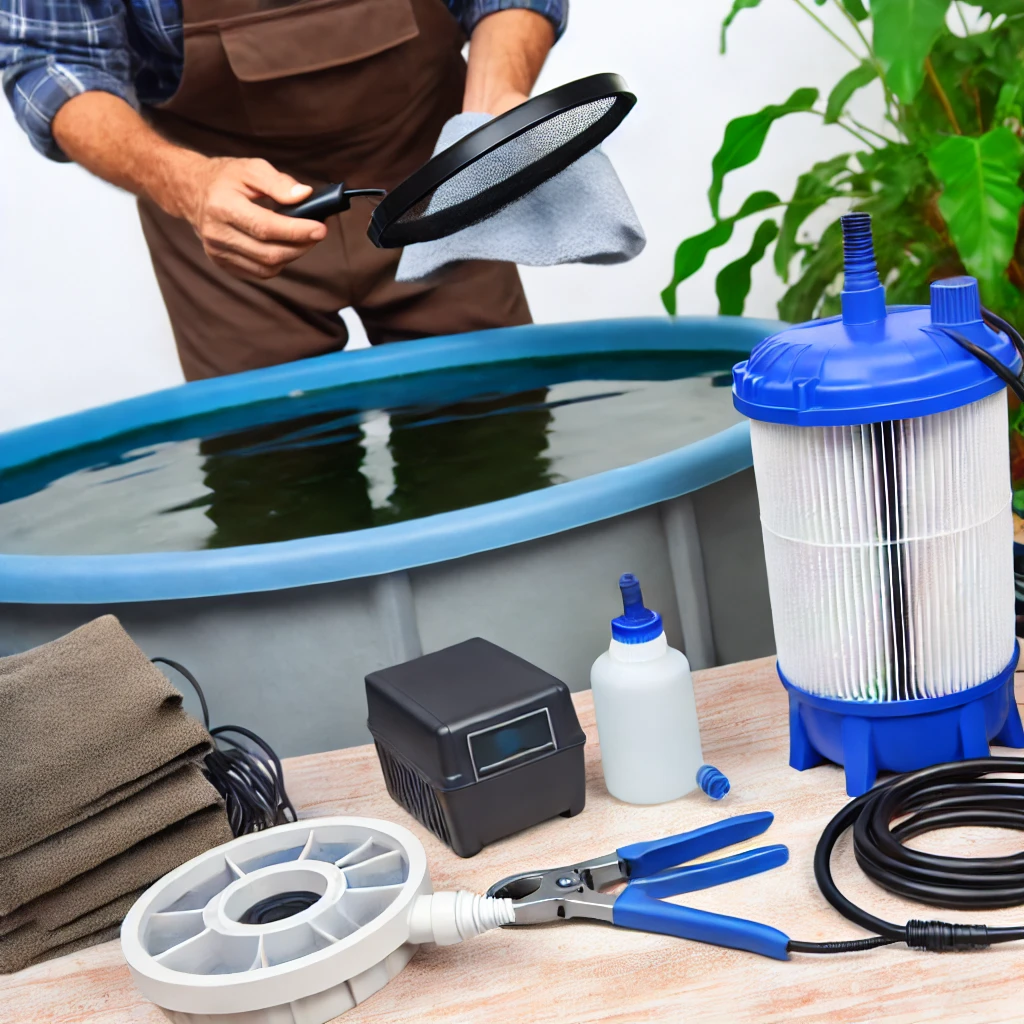Regular maintenance is essential to keep pond equipment in optimal condition and prevent costly repairs or replacements. Pumps, filters, and aeration devices all require periodic care to function efficiently and maintain a balanced pond ecosystem. Here’s how consistent maintenance extends the life of your pond equipment and saves you time and resources in the long run.
1. Benefits of Regular Pump Maintenance
Pond pumps are the heart of any pond system, circulating water and providing necessary oxygen levels. Over time, debris, algae, and dirt can clog the pump, reducing its efficiency. Regular maintenance includes cleaning the pump’s intake screen and impeller, preventing clogs and maintaining water flow.
If your pump has a variable flow feature, check it periodically to ensure settings are optimized for your pond’s needs. Regular upkeep not only extends the pump’s lifespan but also reduces energy consumption, saving on operating costs. For options with easy maintenance, consider our Pump and Filter Kits.
2. Keeping Filters Clean for Optimal Performance
Filters play a crucial role in removing debris and harmful substances from pond water. As they work, filters accumulate waste, which can clog the system and reduce effectiveness. Regularly clean or replace filter media to keep water quality high and avoid straining the pump.
Mechanical filters, in particular, require frequent cleaning to maintain efficiency, while biological filters benefit from a light rinse to preserve beneficial bacteria. Following a maintenance routine for your filters will extend their functionality and support a healthier pond environment. Our Pond Maintenance services offer professional support to keep pumps in optimal condition.
3. Aeration System Care for Reliable Oxygen Levels
Aeration systems increase oxygen levels in the pond, essential for fish health and reducing algae growth. Air stones, diffusers, and tubing can develop blockages over time, reducing airflow. Regularly inspect and clean these components to keep the aeration system running smoothly.
In larger ponds, lake aerators may require more substantial maintenance due to increased usage. Keeping your aeration equipment in good shape ensures consistent oxygen distribution, contributing to a stable and balanced ecosystem.
4. Seasonal Adjustments for Pond Equipment
Each season brings different challenges for pond equipment. For example, winter requires preparing equipment to prevent freezing, while spring demands thorough cleaning to remove debris. Adjusting your maintenance routine seasonally helps your equipment adapt to changing conditions, preventing unexpected breakdowns.
For winter care, consider equipment like heaters or de-icers, which protect your pond from freezing and reduce strain on the pump and filter. Refer to our guide on Pond Maintenance for seasonal care tips.
5. Checking for Wear and Tear
Routine inspections are vital for catching early signs of wear and tear. Inspect cables, hoses, and connectors for signs of damage, as these can affect equipment performance. Replacing worn parts promptly extends the life of the equipment and ensures it operates safely and effectively.
Conclusion
Regular maintenance is an investment in the longevity of your pond equipment. By keeping pumps, filters, and aeration systems clean and adjusting for seasonal needs, you avoid costly repairs and replacements. A consistent maintenance routine supports a balanced pond ecosystem and ensures your equipment runs smoothly, keeping your pond beautiful and healthy all year round.


